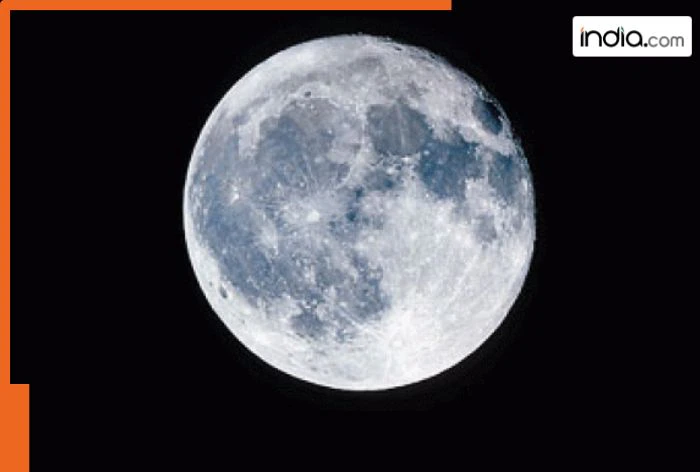By Sumaila Zaman
Copyright india

A remarkable new finding regarding rust found on the Moon has amazed scientists. Although the Moon has no atmosphere scientists have found the mineral hematite spreading across the Moon’s surface. This abnormal distribution of hematite has baffled scientists particularly since they suspect the rust is likely believed to be caused on Earth. This has been seen before during India’s Chandrayaan-1 mission and this new finding reinforces the findings from India’s lunar mission.
What is causing rust to form on the Moon?
It is to be noted that rust occurs when iron becomes wet and exposed to oxygen. While studying the Moon researchers have discovered hematite (rust) on the Moons surface notably at the poles. The scientists were taken aback by the identification of rust since the occurrence of rust typically requires oxygen and water neither of which is plentiful on the Moon. Which leads to the question: how is it forming there?
Where on the Moon is hematite predominantly found? Who first identified hematite near the lunar poles?
In 2020 scientists confirmed that India’s Chandrayaan-1 mission had discovered hematite near the poles of the Moon. According to the media reports Chandrayaan collected data from the lunar surface and made several discoveries including the presence of water molecules on the Moon. NASA and Hawaii Institute of Geophysics and Planetology researchers also reported seeing indicators of hematite in their studies.
What is the composition of the Moon?
The Moon is full of iron-rich rocks but rust will only form if there is both water and oxygen to react with the iron. Hematite is an iron-rich mineral that forms when rocks react with water and oxygen. A 2020 studys authors suggested that oxygen could have been delivered to the moon through Earths atmosphere.
According to NASA the Moon’s core consists of two sections: a solid mostly iron inner core within a molten outer core. Though primarily made of iron the core contains some nickel and sulfur as well. The Moon’s mantle is mainly composed of basalt rich in olivine and pyroxene according to NASA.
What role does Earth play in the formation of lunar rust?
Researchers have found that particles of oxygen from Earth can travel through space and react with iron-rich material on the lunar surface to produce haematite or rust. The finding indicated that the oxygen must have an exogenous origin and scientists began to investigate whether Earth may have contributed through processes like the solar wind or the Earth’s magnetic field. This discovery was significant as it challenged the notion that the Moon’s surface chemistry was both isolated and static revealing it instead as a dynamic record of interplanetary interactions over time.
For roughly five days each month the Moon orbits the Earth in such a way that the Earth obstructs the Suns constant stream of charged particles. During this time the Moon mostly experiences Earth wind which consists of charged particles such as oxygen hydrogen and nitrogen that escape from Earths upper atmosphere and drift through space.
When these ions hit the surface of the Moon they implant into the top layers of lunar soil. In particular oxygen ions react with iron-bearing minerals to create haematite. This is a natural transfer of particles that indicates real-time chemical exchange between the Earth and Moon previously unrecognized by planetary scientists.
What experiments were done to verify the rust formation process?
In order to verify the contribution of Earths winds to the formation of rust Ziliang Jin and his colleagues at Macau University of Science and Technology organized some laboratory experiments.
STORY HIGHLIGHTS
The Moon orbits the Earth in such a way that the Earth obstructs the Suns constant stream of charged particles.
The Moon is full of iron-rich rocks.
The scientists were taken aback by the identification of rust.
Hematite is an iron-rich mineral that forms when rocks react with water and oxygen.
In essence they approximated the Moons exposure to Earth winds by accelerating two ions oxygen (O2+) and hydrogen (H+) and aiming them at single crystals of iron-rich minerals sourced from compositions likely present on the lunar surface. Their results were convincing: oxygen (O2+) ions caused the iron minerals to convert into hematite while hydrogen (H+) ions added back to the mixture partially converted the hematite back to iron (Fe).



